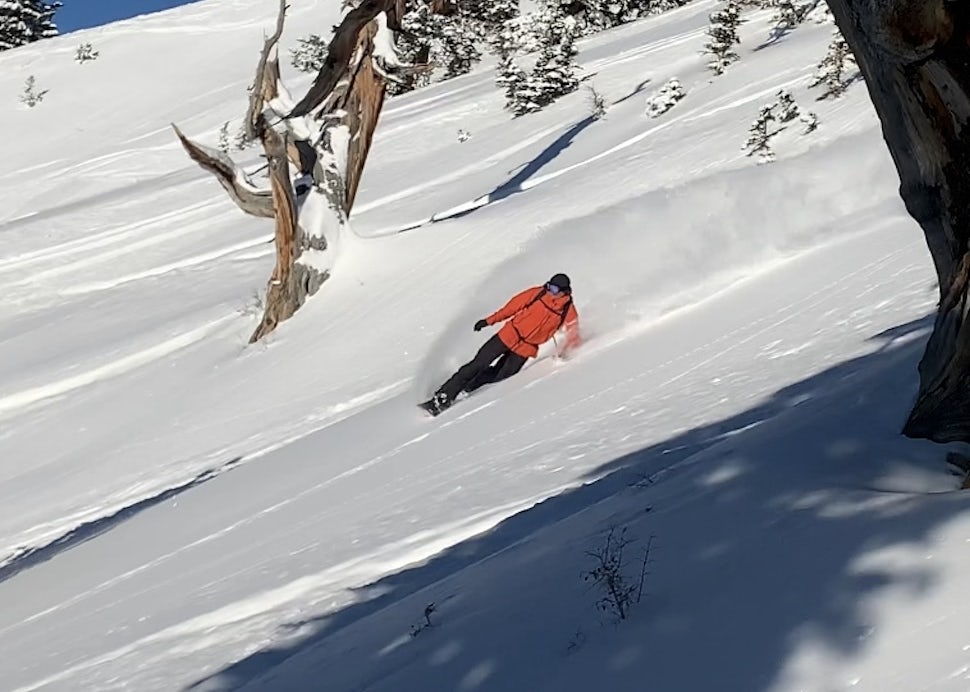Review: The North Face FUTURELIGHT
As they say in Norway, there are no bad weather-days, just bad gear days.

When most people think about recreating in less than optimal weather, they typically think of waterproof/breathable fabrics. Almost every apparel brand has its own proprietary waterproof/breathable fabric. But, when most people think of waterproof/breathable fabric, they instantly think of Gore-Tex. Gore-Tex is the 800-pound gorilla in the room.
So, last winter, when The North Face announced they had developed FUTURELIGHT, their own revolutionary waterproof/breathable membrane, I had to check it out. Looking at TNF’s demonstration last January, they provided a visually compelling presentation that their fabric was better.

Why is it essential to have a breathable waterproof jacket or pants? Simple, if you ever put your hand in a sandwich bag and sealed it with a rubber band, you would eventually see the moisture that escapes from your body condensing inside the bag. You can dunk your sandwich bag hand in a bucket of water and stay dry from that water, but your hand is still getting wet from the condensation inside the plastic bag. It’s kind of like waking up in your tent with condensation on the inside. You stayed dry from the rain, but your sleeping bag is wet from rubbing against the damp walls inside the tent.
When you are out recreating, your body temperature increases as you exert more energy. If you are working hard enough, that moisture exits your body trying to cool you down and keep a constant body temp. Typically, your base and mid-layers have excellent breathability, but your outer layer stops the humidity. That’s usually been the trade-off. If you want a waterproof shell, it limits how much moisture can exit the shell. That’s why companies created softshell jackets and pants. These offer excellent breathability but are only water-resistant. The other downside of traditional waterproof/breathable materials is that they are stiff and crinkly, whereas softshells have a nice feel.

How did The North Face accomplish the task of creating a best-in-class waterproof/breathable fabric? They completely re-thought the manufacturing process. To create the FUTURELIGHT membrane, they use 200,000 nozzles that emit a polyurethane solution to a surface below - creating the nanomembrane. This ultra-thin nanomembrane allows air and vapor to escape why remaining waterproof. Since the FUTURELIGHT nanomembrane is ultra-thin, it’s incredibly light and allows the fabric to have a fantastic drape. No longer are you wearing a boxy piece of clothing! I also like the fact that their face and back layers of fabric are created using 70% recycled materials. The North Face says this is their most sustainably produced fabric to date.
All of this tech jargon is great, but how does the fabric perform in real life? I’ve had the opportunity to use The North Face’s Freethinker Jacket and Pants on multiple snowboard tours this season. The Freethinker Jacket and Pants are part of their Steep Series and are 3-layer shells designed for skiing and snowboarding, but you could use it for any winter/cold season activity.

First off, I noticed how light and soft the jacket and pants are. They felt more like a softshell, but lighter! The other thing I saw on the jacket was that it was missing the traditional pit zips. Initially, I thought this would be a problem, but The North Face designed the three extra-large pockets on the front of the jacket to double as vents! The cut and feel of the jacket is fantastic! The fabric has a slight stretch and doesn’t restrict movement.
On hikes in the snow, the fabric performed well. In fact, I placed my glasses inside the mesh pocket for my descent, and when I was at the bottom, they were dry and moisture-free. Typically, my glasses would be frozen and done for the day.

During ascents, I typically open both the inner and outer thigh vents on my pants to release heat. With the Freethinker pants, they only have exterior thigh zips, but I haven’t had to unzip them yet to dump heat.
I’ve worn the gear in a variety of conditions with ultra-low temps and wet snowstorms, and FUTURELIGHT has performed beyond my expectations. On one of my outings, I was going to use my other 3-layer shell and pants and quickly reverted. The fit, feel, and performance of The North Face’s FUTURELIGHT is far superior. We’ll have to see how it holds up during an entire season. Stay tuned!

Cover photo by Dave Steiner
We want to acknowledge and thank the past, present, and future generations of all Native Nations and Indigenous Peoples whose ancestral lands we travel, explore, and play on. Always practice Leave No Trace ethics on your adventures and follow local regulations. Please explore responsibly!
Do you love the outdoors?
Yep, us too. That's why we send you the best local adventures, stories, and expert advice, right to your inbox.







